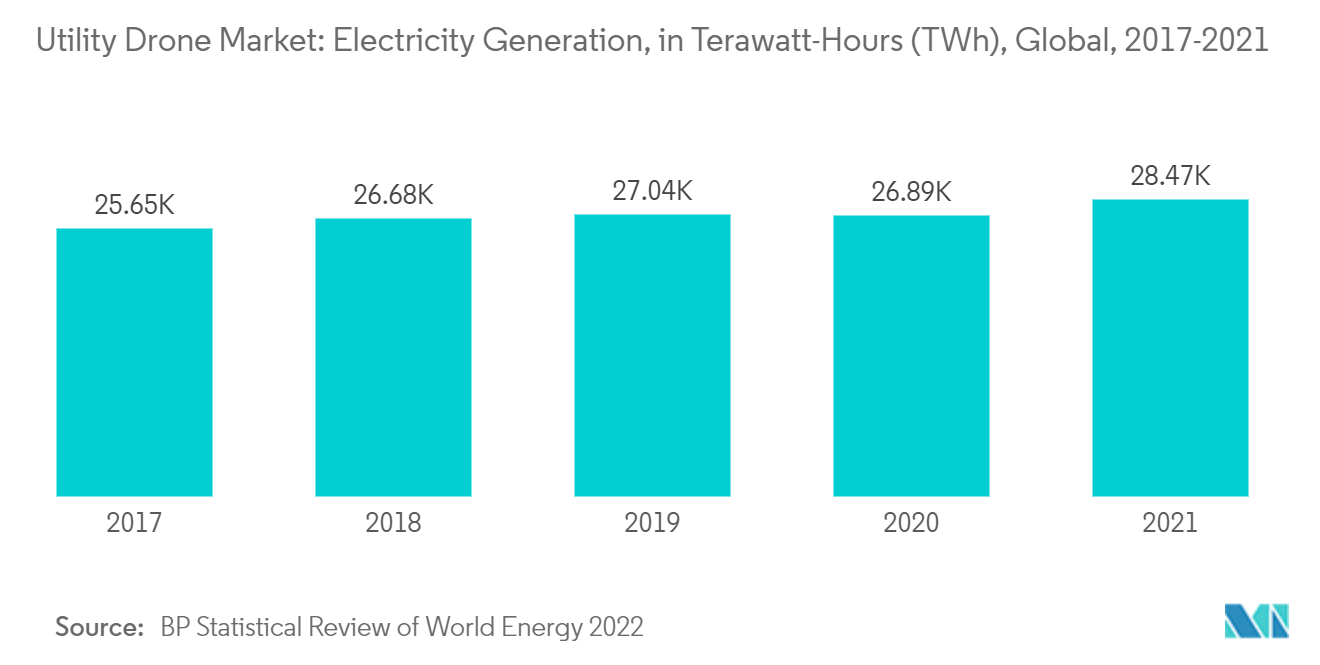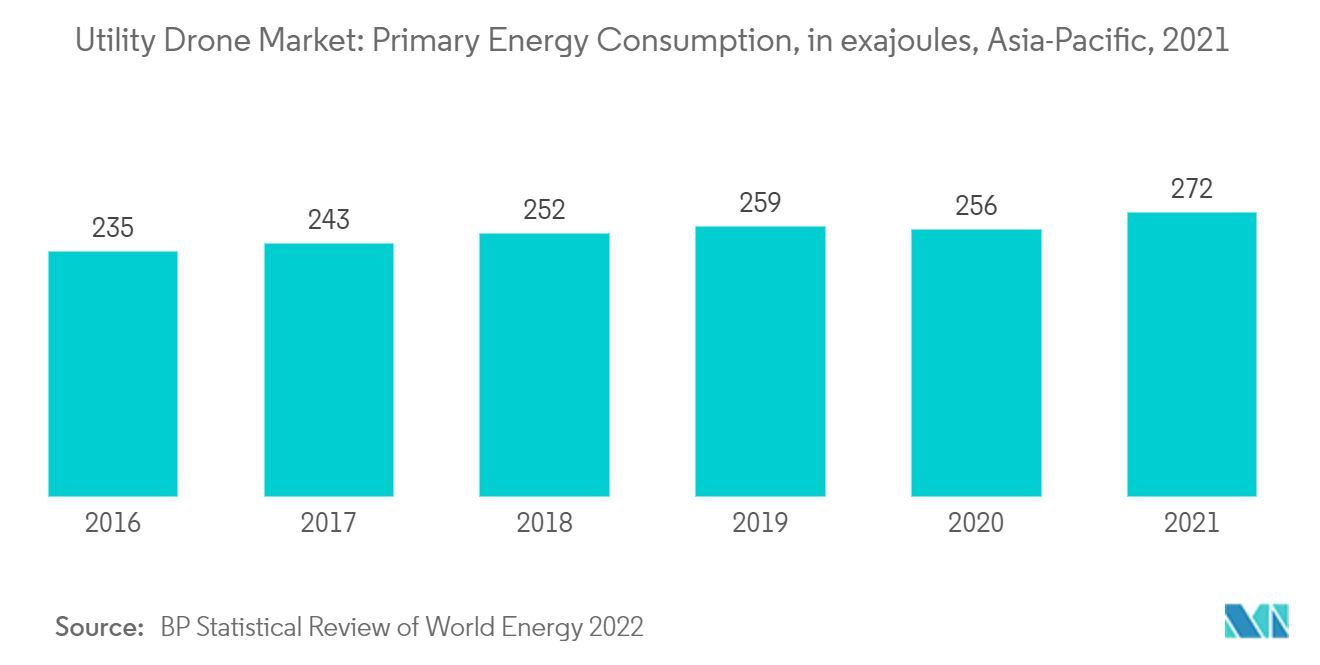Market Trends of Utility Drone Industry
Fixed-Wing Segment to Witness Significant Growth
- Fixed Wing drones, as the name suggests, have one rigid wing designed to look and work like an aeroplane, providing lift rather than vertical lift rotors. Hence, this drone type only needs the energy to move forward and not to hold itself in the air, making them energy-efficient
- Fixed-wing drones can cover longer distances, map much larger areas, and loiter for long times monitoring their point of interest. Additionally, they can fly at a high altitude, carry more weight, and are more forgiving in the air than other drone types. Due to this, they can be used for power line and asset inspection in all kinds of weather and terrains over long periods.
- According to BP Statistical Review of World Energy, in 2021, the global electricity generation was about 28,466.3 Terawatt-Hour (TWh), up by 6.2% year-on-year and 10.1% since 2017. The increase in electricity generation depicts the worldwide increase in the number of power plants and transmission lines, which are expected to drive the fixed Wing segment of the utility drone market
- In August 2022, Florida Power & Light announced that it was testing a new fixed-wing, an unmanned drone that it plans to use to capture images and videos of assets to aid power restoration following a storm. Four trained pilots will remotely control FPLAir One from a mobile command center, and data will be relayed in real-time to identify issues and inform restoration crew deployments. According to the NextEra Energy utility, the aircraft is of the size of a small plane and can fly into tropical-storm-force winds. It can travel up to 1,000 miles in a single flight.
- Hence, owing to the above points, the fixed-rotor segment is likely to witness significant growth in the utility drone market during the forecast period.
Asia-Pacific Expected to Grow at a Significant Rate
- Asia-Pacific region, due to the constant increase in energy demand in the region, is likely to be the fastest-growing market for the utility drone market. Many big companies in the energy and power business in the region see utility drone usage as a new and safe way for their asset management.
- According to BP Statistical Review of World Energy, during 2021, Asia-Pacific's primary energy consumption stood at 272.45 EJ (ExaJoules), up by nearly 6.4% year-on-year. Additionally, over the period of 2016-2021, primary energy consumption has increased steadily at a CAGR of 1.73%.
- As energy demand increases, while most governments try to reduce power generation from polluting sources such as fossil fuels, most countries in the region are focused on reducing transmission and distribution losses and downtime in generation plants, which is a significant factor driving the demand for utility drone inspection services in the region during the forecast period.
- Countries such as China, Japan, South Korea, Australia, and India have shown keen interest in the utility drone market. The motives behind these interests are to save the non-productive time of the plants, which may occur due to any default by being proactive in any such situations and not risking human life.
- These drone services are extremely useful in places such as nuclear power plants or gas power plants, where the proper visual investigation is necessary to measure the seriousness of the problem.
- In November 2022, drone manufacturer Carbonix announced that it had partnered with electricity distributor SA Power Networks and communications group Nokia to utilize long-range Un-Crewed Aerial Vehicles (UAVs) for aerial inspection on remote electricity lines and network assets in South Australia. In the initial phase of the partnership, a Carbonix Volanti unmanned aerial vehicle (UAV) will be used to prove the Beyond Visual Line of Sight (BVLOS) capability using the Nokia Digital Automation Cloud (DAC) for wireless network connectivity.
- The UAVs are expected to speed up the utility providers' response times to outages affecting customers as well as asset inspection cycles, fault finding, bushfire preparedness, maintenance work, and line re-stringing while improving safety and efficiency for employees.
- Similarly, in November 2021, the Telangana state government in India announced that it had successfully completed a pilot project that sought to explore the use of drones for the inspection of power lines and towers. The project is expected to be scaled up soon.
- Hence, owing to the above points, Asia-Pacific is expected to see significant market growth in the utility drone market during the forecast period.




